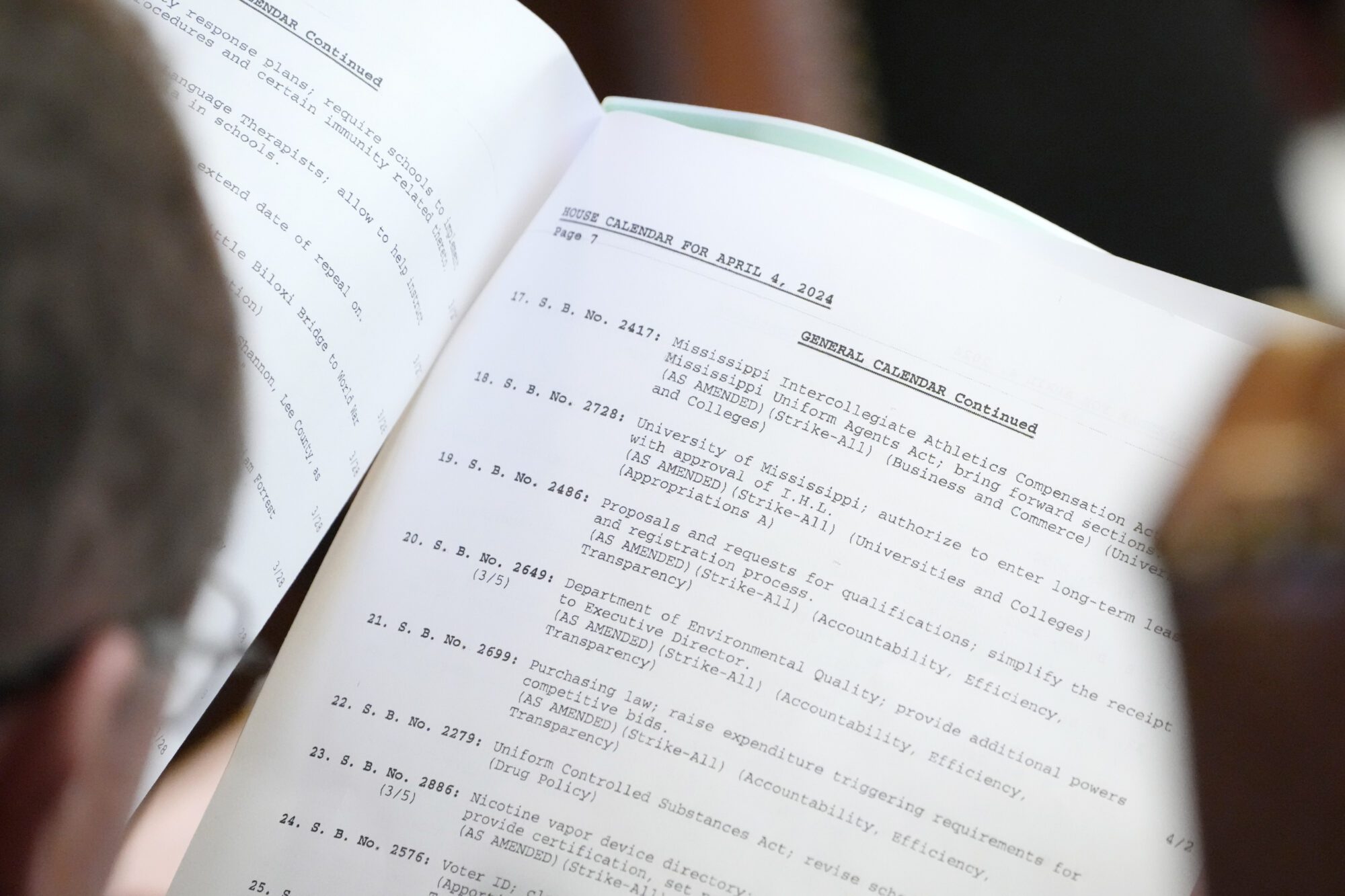Crypto
Years later, the Marshals Service is still looking for help with seized crypto

Amid a surging number of criminal convictions involving cryptocurrency, the U.S. Marshals Service has been tasked with managing and disposing of bitcoin and other digital assets. Like other seized property, the law enforcement agency is in charge of taking custody of crypto through the Department of Justice’s Asset Forfeiture Program — and even periodically auctioning it off.
But, at least from a software perspective, keeping track of crypto is a lot harder than selling a Chagall. For that reason, the law enforcement agency has spent the past few years trying to hire a private tech company to help. But despite settling on contracts with crypto companies, at least two agreements appear to have fallen through. Today, the Marshals Service is still maintaining seized crypto on its own.
“As the seizure and forfeiture of cryptocurrency has become commonplace, the USMS has sought to create a contract with private industry, just as it does with nearly all other asset types,” a spokesperson for the DOJ’s Asset Forfeiture Division told FedScoop. “Currently there is no private company that manages USMS’s cryptocurrency portfolio.”
The search for a contractor started several years ago, when the US Marshals Service requested information from companies about the prospect of managing the agency’s cryptocurrency. In April 2021, a company called Bitgo, a crypto security company based in California, won a $4.5 million contract.
But, then, BitGo lost the agreement a few months after the Small Business Administration flagged the company as being too big to meet the contract eligibility. (Back in May, a company called Galaxy Digital had announced it planned to spend $1.2 billion to acquire BitGo, though the deal fell apart afterward.) In July, the Marshals Service hired another company, Anchorage Digital, which is based in San Francisco and also offers cryptocurrency holding services.
Now, though, the Anchorage Digital contract also appears to have collapsed. As with the BitGo contract, the federal procurement data system shows that a Marshal Service contract with Anchor Labs was “terminate[d] for convenience.” Anchorage Digital is a subsidiary of Anchor Labs, according to its website. The company appears to have taken down a Medium post touting the agreement.
“Both awards were subsequently stayed pending the outcome of protests filed with the U.S. Small Business Administration (SBA), challenging the companies’ business size,” the USMS spokesperson told FedScoop. “Ultimately, SBA determined that both companies were other than small business.”
The company did not respond to a request for comment, though it’s worth noting that the Comptroller of the Currency issued a consent order against the company, which has an OCC banking charter, in 2022. The Small Business Administration did not provide a comment by the time of publication.
“Not all cryptocurrency seized for forfeiture by the federal government is transferred to the USMS for custody and liquidation,” added the DOJ spokesperson. “The USMS utilizes the best practices and services of private industry to most effectively and securely manage and liquidate all assets in its custody.”
The USMS has struggled with handling crypto, as a DOJ Office of Inspector General report highlighted last summer. At the time of the report’s publication, the Marshals Service was using multiple spreadsheets to manage its crypto, primarily because digital assets like bitcoin aren’t easily tracked in a DOJ property management program called the Consolidated Asset Tracking System (CATS).
These documents, according to the inspector general, don’t have “inventory management controls” and “documented operating procedures.” Policies for handling, storing, and valuing crypto are also “inadequate or absent, and in some instances provide conflicting guidance.”
“The USMS’s supplemental spreadsheets do not have the capability to track edits made to the cryptocurrency entries in the USMS’s inventory records,” warned the inspector general. “As a result, these inventory records could be edited or deleted without a record of such a change being made and without the knowledge of individuals responsible for maintaining the spreadsheets.”
In some circumstances, the Marshals Service was “not fully complying” with rules for tracking crypto in CATS, the reported added.
The inspector general also said that the Marshals Service needs to develop more fleshed-out crypto policies before beginning work with a private company, cautioning that “without properly documented policies and procedures, the USMS lacks an adequate foundation for building performance requirements for a cryptocurrency services contract.”

Crypto
Mexico Ranks Third in Latin America for Cryptocurrency Ownership: Blockchain Trends

- Currently, 3.1 million Mexicans own cryptocurrencies such as bitcoin, ethereum, solana, dogecoin, or binance.
- Coinbase aims to enter the Mexican market with cost-effective cryptocurrency withdrawal services, aiming for a 30% reduction.
The adoption of cryptocurrencies among Mexicans has seen substantial growth, with 3.1 million individuals owning digital assets such as bitcoin, ethereum, solana, dogecoin, or binance. This accounts for 2.5% of Mexico’s population, positioning the country as the third highest in Latin America for cryptocurrency adoption, trailing behind Brazil and Argentina.
Globally, Mexico ranks 16th in cryptocurrency adoption, according to the Chainalysis Global Crypto Adoption Index.
“Facilitate the withdrawal of cryptocurrencies and offer services up to 30% cheaper than traditional cross-border payment methods.”
Luiz Eduardo Abreu Hadad, Sherlock Communications Researcher and Blockchain Advisor, wrote:
“It seems that Latin America is ready to ride the crypto wave.”
Remittances have played a pivotal role in driving this adoption. In 2023, remittances sent to Mexico totaled $63.313 billion, marking a significant increase and fueling a 60% growth in cryptocurrency exchanges to local currency transactions through platforms like Bitso Business.
Continuing with the previous Crypto News Flash report, the interest in the Mexican market among crypto exchanges continues to rise. Coinbase, for instance, aims to enter the Mexican market by offering cryptocurrency withdrawal services that are up to 30% cheaper than traditional cross-border payment methods.
Luiz Eduardo Abreu Hadad, a researcher and blockchain advisor at Sherlock Communications, noted that “it seems Latin America is ready to ride the crypto wave,” reflecting the region’s growing enthusiasm for digital assets.
Brazil leads Latin America in cryptocurrency adoption, ranking 9th globally, driven by the approval of exchange-traded funds (ETFs) for digital assets and increased acceptance of cryptocurrencies by banks.
Argentina, on the other hand, ranks second in Latin America and 15th globally for cryptocurrency adoption, with 5 million citizens owning some form of digital currency. High inflation rates and stringent capital controls have spurred this adoption among the Argentine population.
In contrast, despite El Salvador’s adoption of bitcoin as legal tender, cryptocurrency adoption has declined. The country dropped from 55th place in 2022 to 95th place in 2023 in terms of public acceptance.
In a previous Crypto News Flash report, overall, the increasing adoption of cryptocurrencies in Mexico and across Latin America underscores a growing trend influenced by economic factors like remittances, inflation concerns, and regulatory developments that shape public perception and engagement with digital assets.
No spam, no lies, only insights. You can unsubscribe at any time.
Crypto
Cryptocurrency Price Today: Bitcoin Rises Above $63,000 Over The Weekend

Crypto
Cryptocurrency after the European Union’s MiCA regulation | Opinion

Disclosure: The views and opinions expressed here belong solely to the author and do not represent the views and opinions of crypto.news’ editorial.
The Markets in Crypto-Assets Regulation (MiCA) marks a significant milestone in the European Union’s journey toward regulating the rapidly evolving crypto market. Its timeline and provisions hold immense importance for both crypto businesses and investors. As we approach crucial dates, starting with the application of stablecoin provisions from June 30, 2024, and the complete application of MiCA on December 30, 2024, the crypto landscape is undergoing a transformative phase.
Over the next two years
MiCA’s staggered timelines and transitional periods, extending up to June 30, 2026, imply a period of fragmented implementation across the EU and European Economic Area (EEA). Jurisdictions such as Ireland (12 VASPs), Spain (96 VASPs), and Germany (12 VASPs) will grant a 12-month transitional period. In contrast, other jurisdictions will offer more extended periods, such as France (107 VASPs) with 18 months, while Lithuania (588 VASPs) will likely only grant five months. This transitional phase will prompt market consolidation as not all existing service providers will secure MiCA licenses. Many will look to capitalize on this interim period before winding down operations.
The race among EU/EEA jurisdictions to become the primary hub for crypto activities intensifies, with jurisdictions like France, Malta, and Ireland competing to take the top spot. However, regulator readiness and compliance for crypto-asset businesses pose significant challenges. Regulators are facing an adjustment period to upskill their staff to process MiCA applications, particularly in jurisdictions with high applicant volumes. The complexity of various business models, encompassing numerous products unfamiliar to regulators, exacerbates this challenge. The general lack of expertise to authorize and supervise this sector requires substantial training efforts.
Challenges for crypto businesses
MiCA, coupled with the vast array of related Level-2 measures (many of which still need to be finalized) and other applicable EU instruments such as the anti-money laundering laws, the Digital Operational Resilience Act (DORA), and the Electronic Money Directive (EMD), create a complex regulatory framework. Understanding what provisions apply to each entity type and what documentation needs to be implemented will be challenging for some.
The delisting of crypto-assets, particularly stablecoins, from EU exchanges due to their issuers’ failure to obtain their licenses on time will pose considerable hurdles and limit the availability of certain assets for consumers.
Adapting to MiCA will strain many entities and require substantial investments in technological infrastructure. The Travel Rule, a requirement in which information must be shared between VASPs with each crypto transaction, also comes into effect at the same time as MiCA. The Travel Rule mandates that CASPs transfer a substantial amount of information about the originator. This includes their address, personal identification number, and customer identification number. In rare cases, it may even require the disclosure of the originator’s date and place of birth. This adds another layer of complexity, further highlighting the need for harmonization within the EU and solutions to comply with the Travel Rule that are interoperable and enable secure data sharing while preserving user privacy.
Key crypto market outcomes
Despite the challenges, MiCA instils confidence in EU entities due to heightened regulatory oversight, the promotion of investor protection and attracting mainstream institutional participation. Enhanced consumer protection measures mitigate risks such as fraud and hacking, fostering trust among retail clients.
MiCA’s reporting requirements will result in regulators across the EU possessing more data, empowering them to monitor market activities effectively. The ability to freely passport activities across the EU will facilitate cross-border operations and reduce regulatory fragmentation while expanding market reach.
MiCA’s prescriptive nature and all-encompassing regime set a precedent for global regulatory frameworks. Other jurisdictions are already observing and may replicate some of MiCA’s provisions and its approach, contributing to regulatory harmonization on a worldwide scale. However, concerns remain as to whether it will stifle growth and innovation and whether businesses will look to relocate to more permissive and less restrictive jurisdictions.
Steps after MiCA
MiCA’s gaps in regulating emerging areas like true defi (the provision of financial services or issuance of financial assets without identifiable intermediaries and with no single point of failure), lending, and NFTs necessitate ongoing policy discussions and further regulatory measures. Reports on these aspects will inform future regulatory developments, potentially leading to a second iteration of MiCA in at least the next four to five years or supplementary measures.
MiCA signals a new era of regulation in the crypto market, aiming to balance innovation with investor protection and market integrity. While challenges persist, MiCA lays the groundwork for a more transparent, secure, and inclusive crypto framework in the EU and beyond. As the crypto landscape continues to evolve, regulatory regimes must adapt to emerging trends and technologies, ensuring sustainable growth and fostering investor confidence.
-

 News1 week ago
News1 week agoTracking a Single Day at the National Domestic Violence Hotline
-

 World1 week ago
World1 week agoIsrael accepts bilateral meeting with EU, but with conditions
-

 News1 week ago
News1 week agoA Florida family is suing NASA after a piece of space debris crashed through their home
-

 World1 week ago
World1 week agoIs Israel’s Smotrich fulfilling his dream of annexing the West Bank?
-

 News1 week ago
News1 week agoSupreme Court upholds law barring domestic abusers from owning guns in major Second Amendment ruling | CNN Politics
-

 Politics1 week ago
Politics1 week agoSupreme Court upholds federal gun ban for those under domestic violence restraining orders
-

 World1 week ago
World1 week agoIsrael will be the ‘ultimate loser’ in war with Hezbollah, Iran says
-

 World1 week ago
World1 week agoNew Caledonia independence activists sent to France for detention















